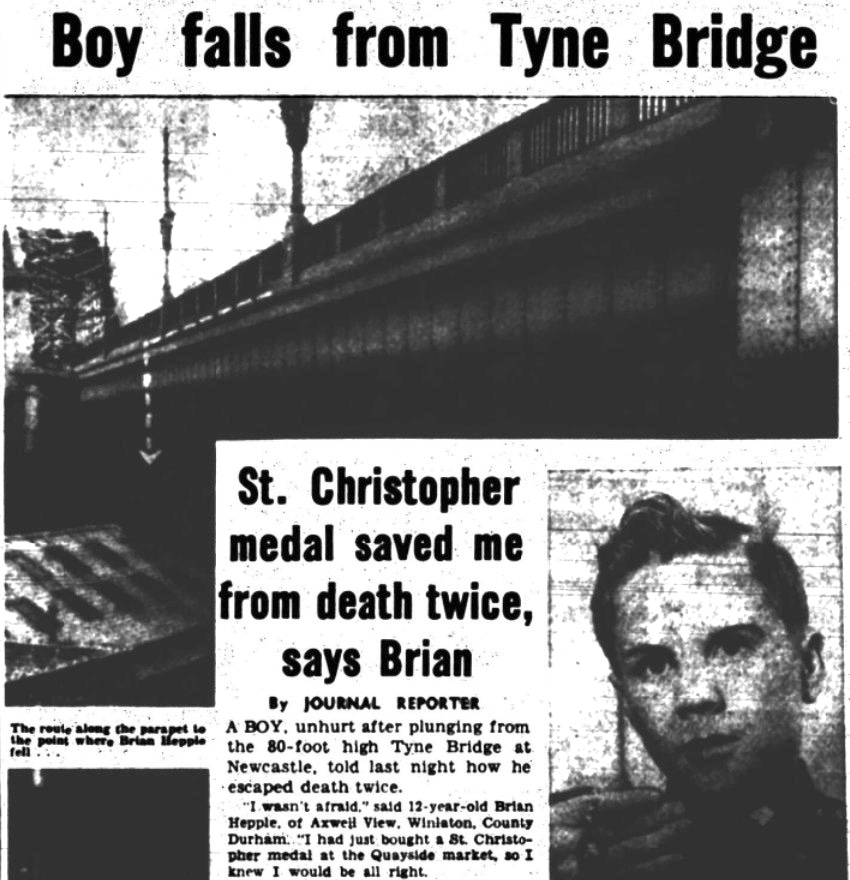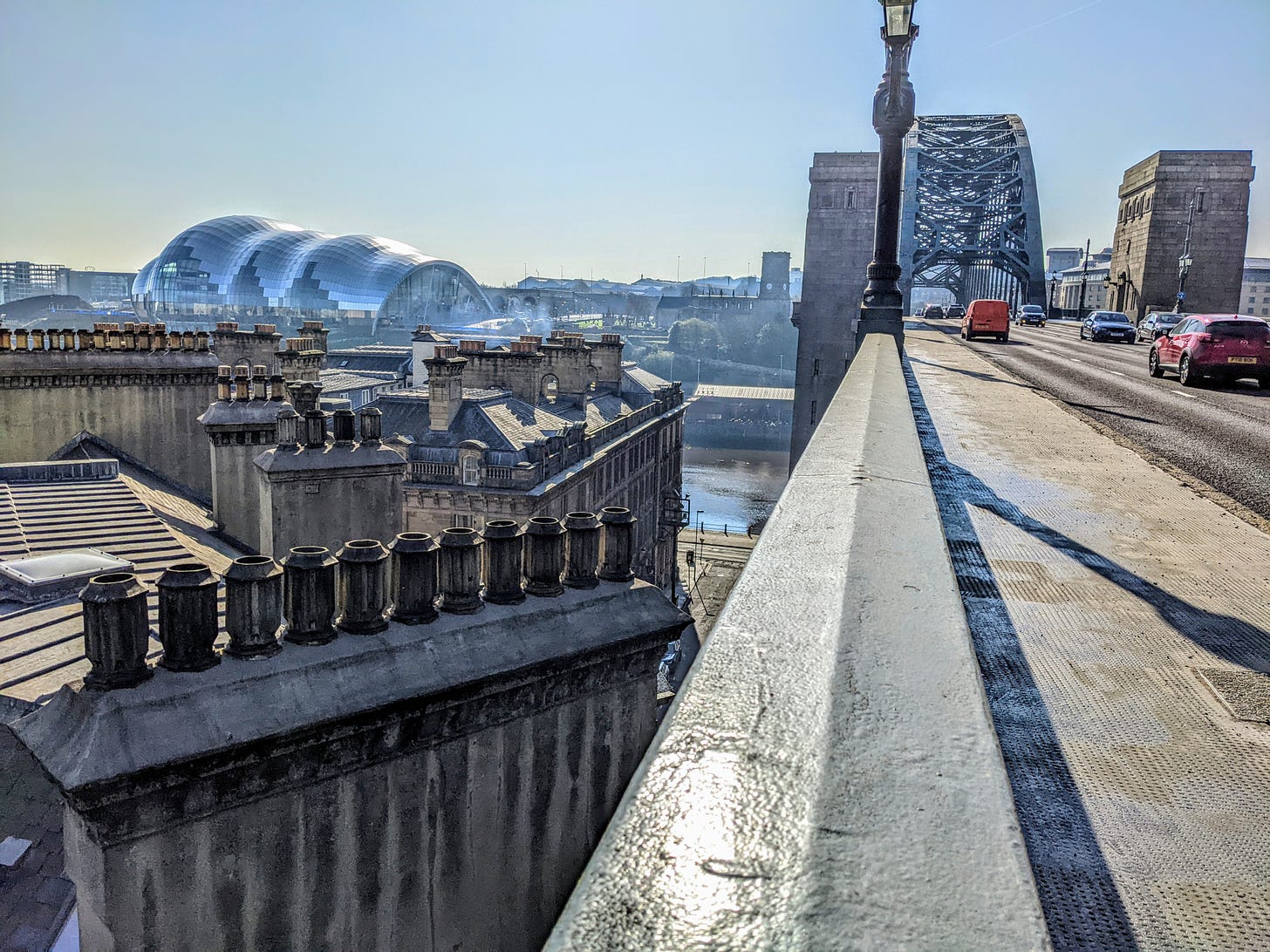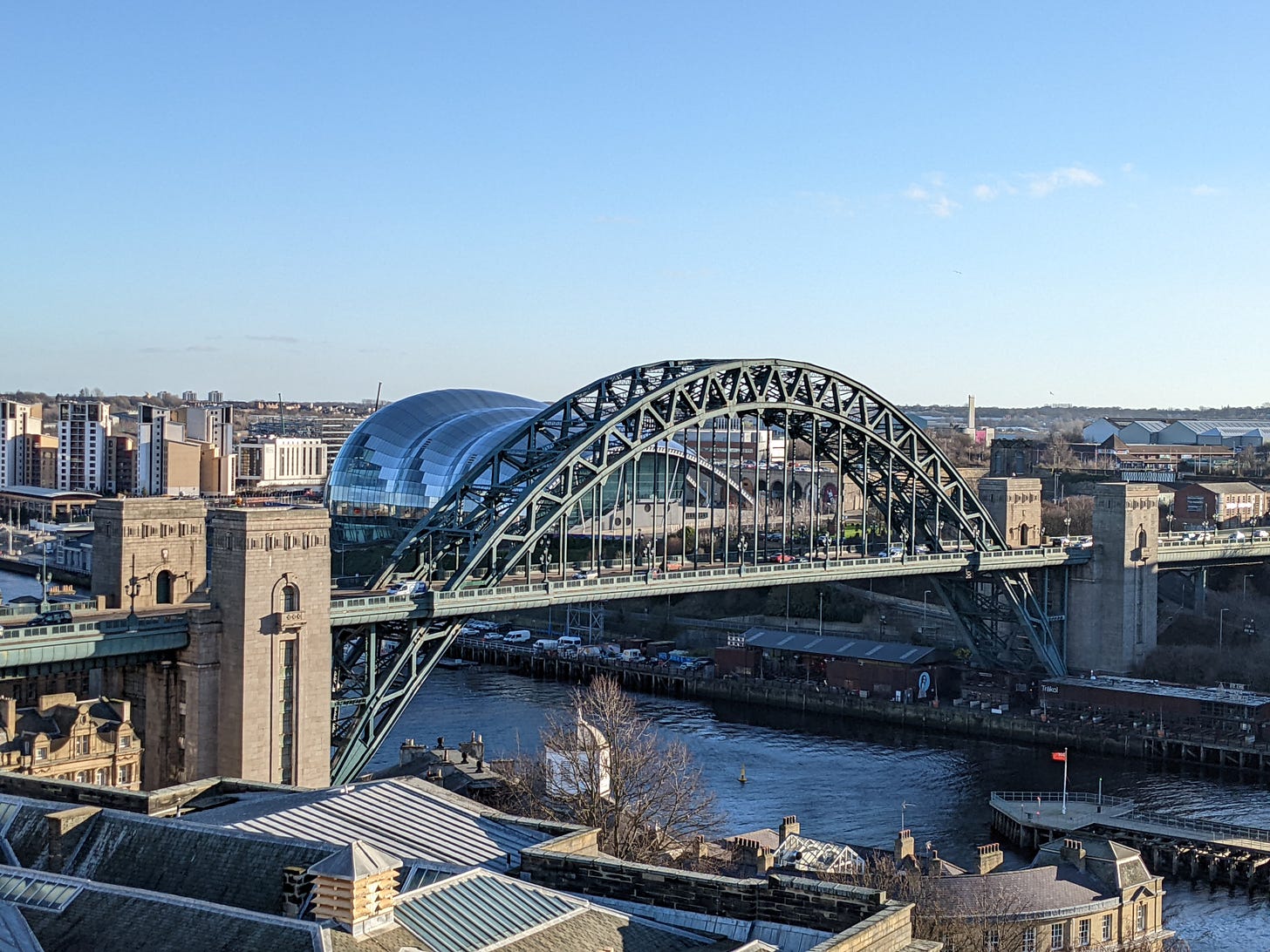Boy Falls From Tyne Bridge—Twice
Brian Hepple fell from the iconic bridge twice within a few minutes—and survived
Shortly before Christmas in 1964, a 12-year-old boy named Brian Hepple fell from the Tyne Bridge twice within the space of a few minutes—and survived. The Tyne Bridge is one of Britain’s most iconic structures. Linking Newcastle and Gateshead over the River Tyne in the North-East of England, the striking steel-arch bridge has become a symbol of Tyneside, an emblem of the region’s cultural identity, and a monument to the Tyne’s industrial past. Its road deck is 84 feet high and its arch reaches 193 feet above the Tyne. Most falls from the bridge (and there have been many) are fatal, but not Brian Hepple’s.
Hepple, from Winlaton in Gateshead, climbed over the parapet of the Tyne Bridge in an effort to try to spot his friend down on Newcastle’s quayside. But he slipped and fell from the bridge. Luckily, he landed on a sloping roof about 15 feet below the road deck and about 70 feet above the ground. When the bridge was built in the 1920s, its approach deck was driven right across the rooftops of the grand old mercantile buildings on the quayside. Roofs were altered and chimneys were demolished as the bridge skirted just a few feet above the old buildings. It was a remarkable feat of construction, and it saved Brian Hepple’s life.
Picking himself up from the roof, with no safe way down, Hepple edged his way around a chimney stack and found a long wooden ladder, possibly a relic from the time the bridge was built. Hepple propped the old ladder up against the edge of the bridge and began to climb. Unfortunately, the ladder snapped, and Hepple fell for the second time, again—fortunately—landing on the roof.
“After that, I thought I had better sit still until the police came,” Hepple later recalled. “I didn’t want to chance my luck a third time.”
The police and fire bridge lowered a more reliable ladder down from the bridge. A fireman descended the ladder and carried Hepple to safety. The police put him on a bus home. Hepple said he had not been afraid and he knew he would get home safely because he was wearing a St Christopher’s medal that he had just purchased at the Quayside market. Evidently a keen climber, Hepple hoped to become a steel erector—just like the men who had built the Tyne Bridge in the 1920s—when he grew up. “The bridge looked safe and easy to climb,” he said. But, he added, the climb had been a waste of time. The friend he had been trying to spot had already gone home.
After putting Brian to bed that night, his mother, Megan Hepple, said, “There’s never a dull moment with Brian. He is always climbing and getting into scrapes. He has nerves of steel. I hope his escape will quieten him down a little.”[i]
Not at all coincidentally, my new book is about the very same bridge that Brian Hepple fell from (twice)—the greatest bridge in the world.
The Tyne Bridge: An Icon of North-East England will be published in time for Christmas by Hurst. You can find more information here.
What's in the new book? The forgotten histories of the Tyne Bridge's predecessors, from the Roman Pons Aelius and the amazing medieval Old Tyne Bridge through to the Victorian era as Tyneside became a famous place of bridges. The untold stories of the men (and woman) who designed and built the Tyne Bridge in difficult and dangerous circumstances, from the pressurised depths of the foundations to the perilous heights of the steel arch.
It’s a celebration of one of Britain’s most iconic structures, recognised around the world by its unique silhouette. How did the Tyne Bridge become a symbol of Tyneside, an emblem of the region’s cultural identity, and a monument to the Tyne’s industrial past? As its 100th anniversary approaches, what does the Tyne Bridge mean to the people of the North East, and why does it have has such a deep connection with those who use it? What makes the Tyne Bridge the greatest bridge in the world?
It’s a narrative history, focusing on the stories of those involved, so expect to be placed alongside the designers and builders to experience what it might have been like, for example, for a Tyne Bridge riveter to have teetered 175 feet above the river on a wind-battered steel beam with nothing but a flat cap to protect them. Expect lots of unusual stories of the type that fill this newsletter.
Oh, and there’ll be lots of photos, some old, some new, some famous, and some rare archive shots specially restored for the book. (Diagrams, too. And a map…)
The book will be published in time for Christmas, and I’ll say more about it nearer the time.
You can pre-order the Tyne Bridge book now with 10% off and free delivery from Book Depository.
Or get it with a pre-order price guarantee from the shop named after the big river that isn’t the Tyne.
Please do pre-order it, if you can. Pre-orders are important because they let booksellers know to pay attention to a particular book among all the thousands of others that will be competing for retail space later this year. And please do tell your friends to pre-order it, too.
In the meantime, have you got any stories about the Tyne Bridge? Grandads or great grandads who helped build it? Memories of seeing the bridge when coming "home"? What does the Tyne Bridge mean to you today? Let me know and I’ll try to include some of them in the book. (Bonus points if you’re Brian Hepple.)
More soon. If you think you know anyone who might enjoy this newsletter (or might enjoy the forthcoming book) please let them know by clicking this magic button:
[i] Main source: “Boy Falls From Tyne Bridge”, Newcastle Journal, 21 December 1964.








